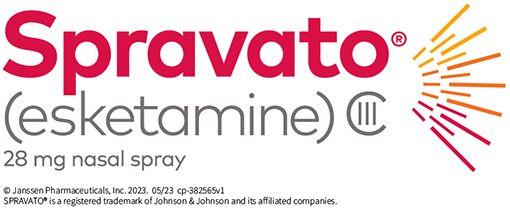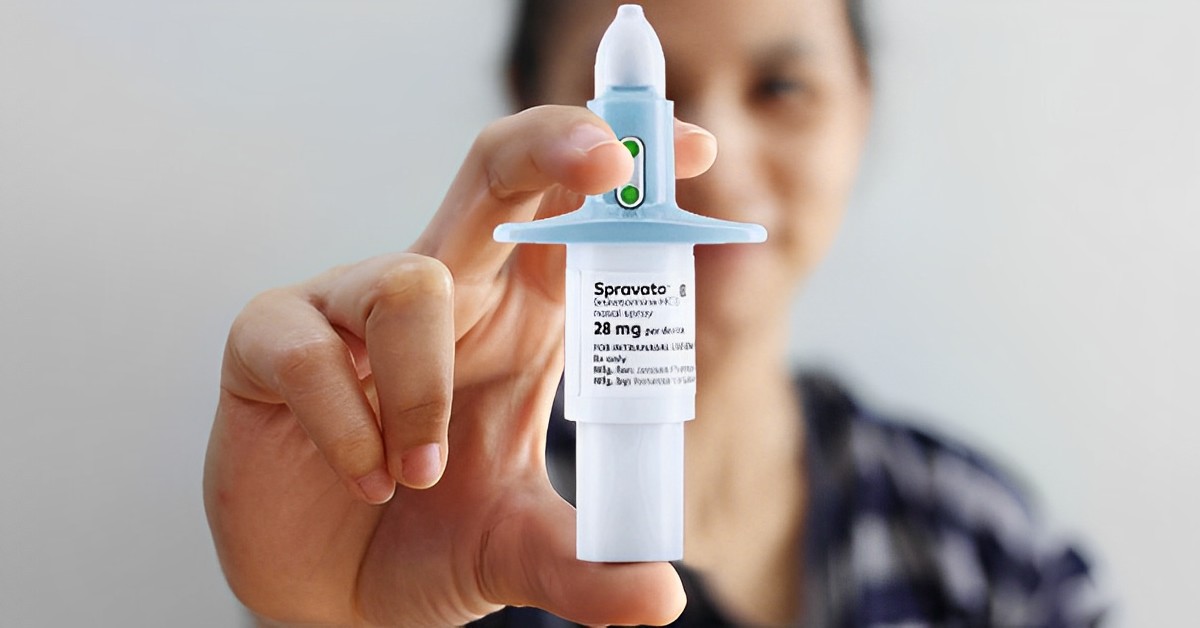

Key aspects of incorporating Spravato into the clinic
• Eligibility and Screening:
Spravato is approved for patients with TRD or major depressive disorder with suicidal ideation. Nurse practitioners need to screen patients carefully to ensure they meet the criteria for Spravato treatment.
• Administration Protocol:
Spravato is administered in a certified healthcare setting due to potential side effects like sedation, dissociation, or increased blood pressure. Nurse practitioners may supervise administration or work alongside trained staff to ensure safety.
• Monitoring and Observation:
After administration, patients need to be monitored for at least two hours in the clinic due to potential side effects. This requires NPs to have protocols in place to observe patients and provide immediate care if needed.
• Coordination with Other Therapies:
Spravato is typically used alongside oral antidepressants. NPs should collaborate with other healthcare professionals to develop a comprehensive treatment plan that includes psychotherapy and other interventions.
• Patient Education and Consent:
Since Spravato has specific side effects and risks, patients should be well-informed. Consent forms need to be signed, and the patient should understand the process and expectations for treatment.
Integration into a Mental Health Clinic
For a clinic to offer both medication management and Spravato treatments, several operational aspects need to be considered:
• Staff Training and Qualifications:
Nurse practitioners must be trained in medication management, including advanced treatments like Spravato.
• Clinical Guidelines:
Clear clinical guidelines for when and how to use Spravato, as well as standardized medication management protocols, ensure that patient care is consistent and safe.
• Infrastructure:
The clinic will need a designated space for Spravato administration, with appropriate medical equipment to handle potential emergencies (such as elevated blood pressure or sedation). Proper storage for Spravato must also be maintained.
• Insurance and Billing:
Spravato can be expensive, and insurance coverage may vary. The clinic will need a billing strategy to help patients navigate this, including obtaining pre-authorization and ensuring the clinic is accredited to administer Spravato.
Collaboration with Mental Health Professionals
Nurse practitioners can work in close collaboration with psychiatrists, therapists, and psychologists to provide holistic care for patients. For example:
• Psychiatrists
Can assist with more complex medication regimens or resistant cases, offering expertise in choosing medications like Spravato.
• Therapists or Counselors
Can support patients undergoing treatment with talk therapy, CBT (Cognitive Behavioral Therapy), or other therapeutic techniques to complement medication.
Monitoring and Outcome Tracking
• Regular Follow-ups:
Nurse practitioners should schedule follow-up appointments to track progress with medication management or Spravato treatments. This allows for adjustments and ensures patients remain engaged in their care.
• Patient Feedback:
Gathering feedback from patients about their symptoms, side effects, and overall treatment effectiveness helps to guide ongoing care.
• Outcome Measurement:
Use validated tools to track the efficacy of treatments, such as the PHQ-9 (for depression) or other scales for mood and psychiatric symptom tracking.
Ethical Considerations
• Informed Consent
Spravato requires informed consent for its use, and patients should be fully aware of the potential side effects, risks, and benefits.
• Confidentiality
Maintain confidentiality and comply with HIPAA regulations when handling patient data, especially considering sensitive mental health treatments.
Conclusion:
Incorporating medication management and Spravato treatments into your clinic with nurse practitioners can enhance patient care, particularly for those with difficult-to-treat conditions. By establishing clear protocols, ensuring proper training, and collaborating with a multidisciplinary team, you can create a robust mental health treatment plan that integrates both traditional and advanced approaches like Spravato.
If you need more specific guidance on creating these services within your clinic, feel free to ask!
What to expect?
During Spravato treatment sessions, a patient self-administers the nasal spray under the supervision of a trained Healthcare Provider. The session typically lasts about two hours, which includes preparation, administration, and monitoring for any potential side effects. After administration, patients are observed for a period of time to ensure safety and monitor their response to the medication. The treatment schedule typically involves twice-weekly sessions for the first month, followed by weekly or biweekly sessions depending on individual response and clinical judgment.
